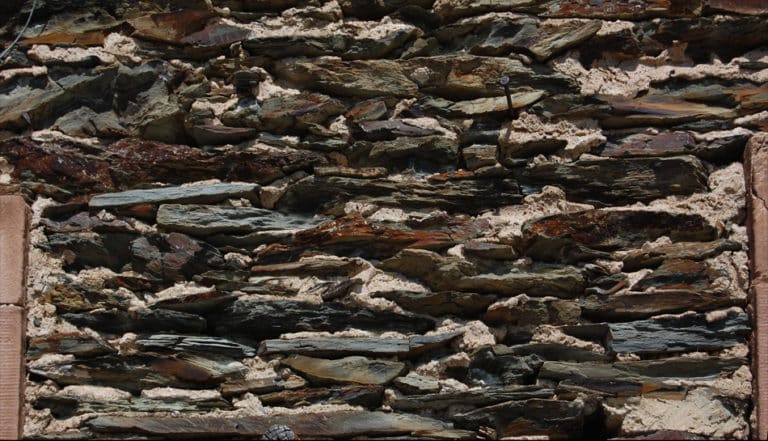SPECIFICATION GENERATOR
Find out which low impact materials are right for your building project.
How to insulate rubble slate walls with ultra-thin wood fibre boards
Find out more about how we approach this building scenario.

Do the UdiIN2CM boards grab the wall & adhesive immediately or is the chance to slide panels about and up to edges?
When bonding the boards to the walls they do adhere fairly quickly and there is only limited opportunity to move them when bonded to the wet adhesive. You can peel off and start again without too much issue but you can’t slide the boards around once on the wall.
Is an air gap left in the honeycomb between the solid board and adhesive?
The honeycomb layer does get partially filled but when I’ve cut through it you can see only 3-4mm is being filled so there is still 11-12mm with air inside.
Has it been used as an internal board (fixed with adhesive) upon which a thicker Udi board is screwed too in order to increase insulation thickness?
In terms of layering up the board with other boards I don’t think this would be a cost effective way to do it as it would be cheaper to apply a levelling coat render to the wall and then mechanically fixing the thicker boards as normal. Additionally, if you increase the thickness of the insulation you will then need to use the UdiMULTIGRUND product to act as a VCL.
Could it suit some rubbly walls we have where it’s difficult to get a mechanical fix?
The UdiIN2CM is great for walls which are friable and difficult to fix into but only to hold the board itself, not for adding additional layers of insulation.
In terms of condensation analysis I would have concerns regarding an air pocket between wall & wood fibre facing in the honeycomb layer. Have you performed any analysis of this?
Because of the thickness of the boards there is no condensation likely, the interface of the board and wall is well inside the dew point. The product has been tested by Dresden University with no issues.
Our walls here are slate rubble which are very difficult to fix into and a foundation layer would need to be very thick to take a fixing, take a long time to dry in typical Wales climate to become hard enough to receive a fixing for UdiRECO or UdiIN2CM. This does create a large hole in the build schedule and a lot of added render costs & internal moisture.
I see a lot of people around here using a hemp lime render instead these days which grabs the slate & lime rubble nicely and finishes well in a 2” layer and is quick and cost effective. Have you fixed a UdiRECO board over this in the past – it tends to be a bit soft for fixings?
Slate rubble is a very difficult medium to apply any insulation to because of it’s friability. Hydraulic lime renders, such as Baumit’s RK39 , will quickly fill out the surface and provide a flat enough surface to apply the board. This will then keep the amount of UdiFOUNDATION coat render to a minimum. The alternative is to spray apply an insulating render, such as the Baumit DP85 to do the same job as the hemp render does. The DP85 has lower thermal conductivity so would not need to be as thick as the hemp and has very much shorter drying times too.
With regards to the UdiRECO, you do need a surface that is fairly robust to fix it to. Unless the slate will take the fixings I would not suggest this as a solution and from memory the slate is too soft for the fixings to hold in adequately.